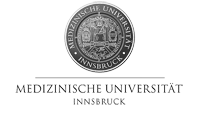|
|
 |
1 1-st Department of Paediatrics, Safarik University, Kosice, Slovakia
2 Department of Biostatistics, Safarik University, Kosice, Slovakia
3 Division of Cardiology, Department of Cardiovascular Diseases, Kosice, Slovakia
AIMS: Overweight and obesity in the youth are often associated with essential hypertension and premature atherosclerosis. We therefore evaluate the relationship between newly diagnosed essential hypertension (EH), established markers of cardiovascular risk and endothelial function in overweight and obese adolescents and young adults.
METHODS: The study group included 63 subjects with overweight or obesity (36 males/27 females, aged 19,8 ± 4,2 years, BMI 29,3±3,4 kg/m2). All subjects underwent 24-hours ABPM. According to the ABPM, 25 patients were classified as having mild to moderate EH, whilst 38 subjects were normotensive (NT). The patients with smoking habit, diabetes mellitus, secondary hypertension and antihypertensive treatment were excluded. Total cholesterol, HDL, LDL, triglycerides, uric acid, creatinine and glucose levels were analyzed in fasting blood samples and urinary albumin excretion in 8-hours urine samples. Endothelial function was evaluated using brachial artery flow-mediated dilation (FMD). Maximal artery dilation response against baseline diameter up to 180 seconds after cuff release (peak FMD, %) was assessed.
RESULTS: Serum uric acid levels were significantly higher in EH than NT subjects (381±92 umol/l vs. 337±72 umol/l, respectively, p=0,02). No significant differences were found in serum lipid profile, creatinine, fasting glucose and urinary albumin excretion between EH and NT groups. Peak FMD response was significantly lower in EH group when compared with NT group (5,49±4,83 % vs. 12,75±3,47 %, respectively, p<0,0001).
CONCLUSIONS: Newly diagnosed EH in overweight and obese youth is associated with hyperuricemia and endothelial dysfunction. Hyperuricemia may play a causal role in the pathogenesis of EH and endothelial dysfunction and thus contribute to early-onset atherosclerosis in overweight and obese adolescents and young adults.
